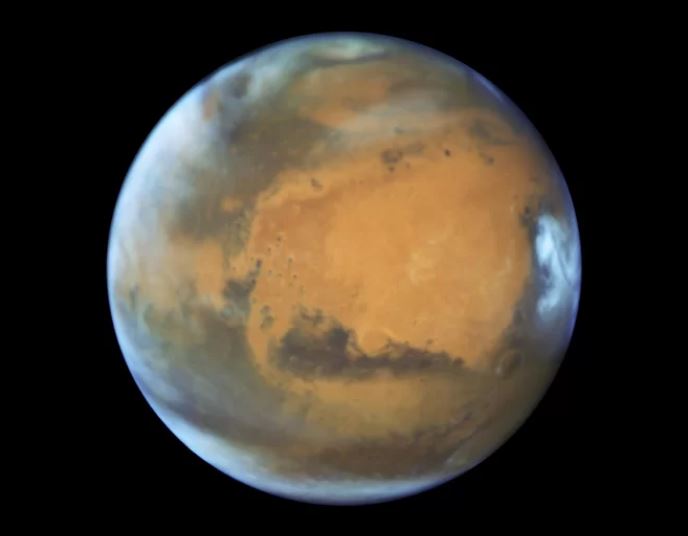All year round, wispy blue clouds of ice form in the Martian atmosphere, hovering between 18 and 37 miles (30 and 60 kilometers) above the planet’s surface.
Decades after rovers like the Mars Pathfinder snapped the first pics of these alien clouds, astronomers still struggle to explain them. And a new study claims the likely culprit are pulverized meteorites.

Look up from the Red Planet on the right morning, and you might see a blue sky. All year round, wispy blue clouds of ice form in the Martian atmosphere, hovering between 18 and 37 miles (30 and 60 kilometers) above the planet’s surface. There, they streak across the sky like the feathery cirrus clouds we see so often on Earth.
Decades after rovers like the Mars Pathfinder snapped the first pics of these alien clouds, astronomers still struggle to explain them.
To form a cloud, airborne ice or water molecules need something solid to condense onto — a fleck of sea salt, maybe, or some stray dust tossed up on the wind.
Scientists long assumed that bits of surface dust lofted into the Martian atmosphere might be the source of the planet’s icy blue clouds.
But a new study published today, June 17, 2019 argues that this might not be the case. A more likely culprit, the study authors said, is pulverized meteorites.
How, please?
The hypothesis goes like this: Every day, 2 to 3 tons of screeching space rocks slam into the Martian atmosphere and break apart. All those midair collisions leave a lot of dust — or “meteoric smoke,” as the study authors call it — hanging around the Martian sky. And that dust might just be enough to turn trace amounts of water vapor in the atmosphere into fragile, icy clouds.
Now look at the clouds by yourself:
The strange results
To find out if this meteor-based cloud system is possible, the researchers ran multiple computer simulations of how particles flow through the Martian atmosphere.
- Clouds formed at the correct altitudes only when meteorites threw sufficient amounts of dust into the sky. When there were no meteorites, there were no clouds.
- The meteor clouds of Mars had a noticeable effect on the planet’s climate. At certain times of year, ice clouds in the Martian sky increased temperatures by up to 18 degrees Fahrenheit (10 degrees Celsius) in the upper atmosphere, the model predicted. If that’s the case, tiny flecks of dust from other worlds may profoundly affect weather on Mars and even our own planet.
“We’re used to thinking of Earth, Mars and other bodies as these really self-contained planets that determine their own climates,” said lead study author Victoria Hartwick, a graduate student in the University of Colorado’s Department of Atmospheric and Ocean Sciences. “But climate isn’t independent of the surrounding solar system.“
And yeah! That’s again completely crazy! The Martian clouds condensate onto asteroid, meteor and cometary dust!
[Nature, EurekaAlert, LiveScience]











